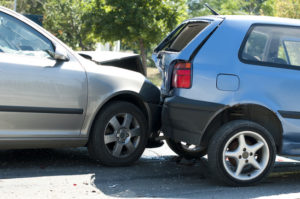In the state of New Mexico, people who are as young as 15 years old can enroll in a driver’s education course. Although these classes aim to provide students with a comprehensive understanding of all local traffic laws, they often contain so much information that passing them comes down to rote memorization.

Older students who enroll in such courses may be able to comprehend the information by using prior life experience to contextualize it, but young drivers who are used to memorizing factoids in an academic setting may not necessarily retain everything they learn. Since following all local traffic laws is an essential component of being a safe driver, motorists who obtained their license as a teenager could probably use a refresher course in the essentials, like signage and pavement markings.
Failing to familiarize yourself with local regulations could lead to reckless driving, and it can have devastating consequences. If you sustained debilitating neck or back injuries in a motor vehicle collision with a negligent driver who was violating the law at the time of the accident, contact The Law Office of Brian K. Branch, PC.
With a combined 32 years in legal practice, our attorneys have the experience and professionalism to help you navigate the claims process in order to pursue the compensation you deserve. Call 505-207-4401 to schedule a free case evaluation with a back injury lawyer in Albuquerque.
What Do the Different Pavement Markings Mean?
The New Mexico Department of Transportation (NMDOT) uses pavement markings to facilitate the flow of traffic and regulate individual motorists who are attempting to perform a driving maneuver like turning or passing. For optimum visibility, pavement markers rely on retroreflectance, which reflects the light from a vehicle’s headlights back to its driver.
In general, white lines are used to separate different lanes of traffic traveling in the same direction, while yellow lines separate traffic traveling in opposite directions. Solid lines of either color indicate that passing is not allowed at that particular stretch of road.
Broken lines allow passing if it is safe to do so. For example, broken white lines are common between the different lanes of a highway, where motorists pass one another frequently.
Broken yellow lines also exist on some roads, but it is essential to use extreme caution when passing a vehicle by crossing over a dashed yellow line. Two solid yellow lines means passing is never okay on that stretch of road, and one solid and one broken yellow line running parallel to each other means motorists who are traveling on the same side as the dotted line may pass; however, those who are on the same side of the road as the solid line must never cross over into oncoming traffic in order to pass.
If you were in a catastrophic collision with a motorist who failed to abide by the pavement markings, contact The Law Office of Brian K. Branch, PC. A compassionate lawyer on our team can evaluate the circumstances of your accident to determine if you have grounds for a claim.
Call 505-207-4401 to schedule a free consultation with a back injury attorney in Albuquerque. If you want to learn more about car accident claims in New Mexico, visit USAttorneys.com.




